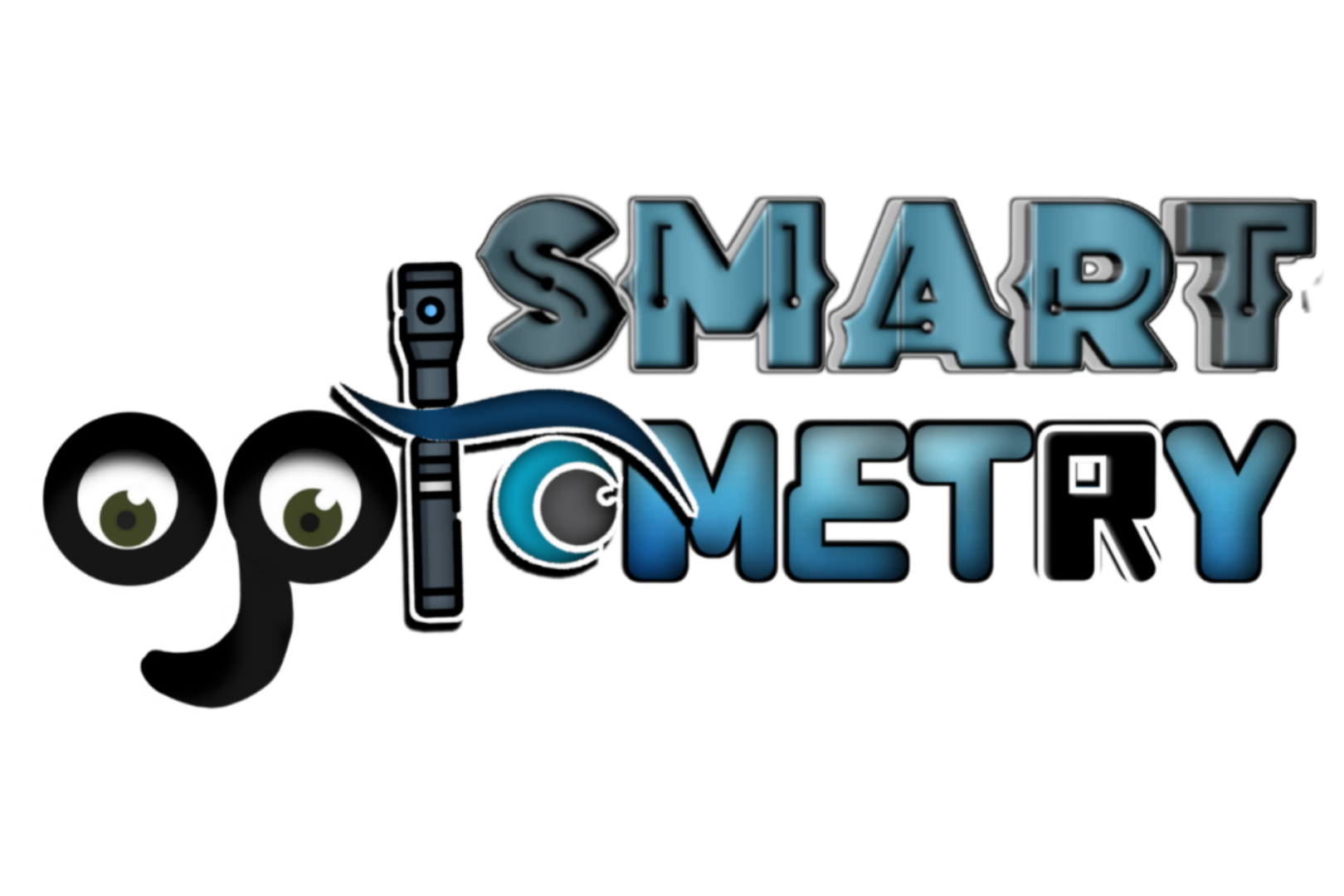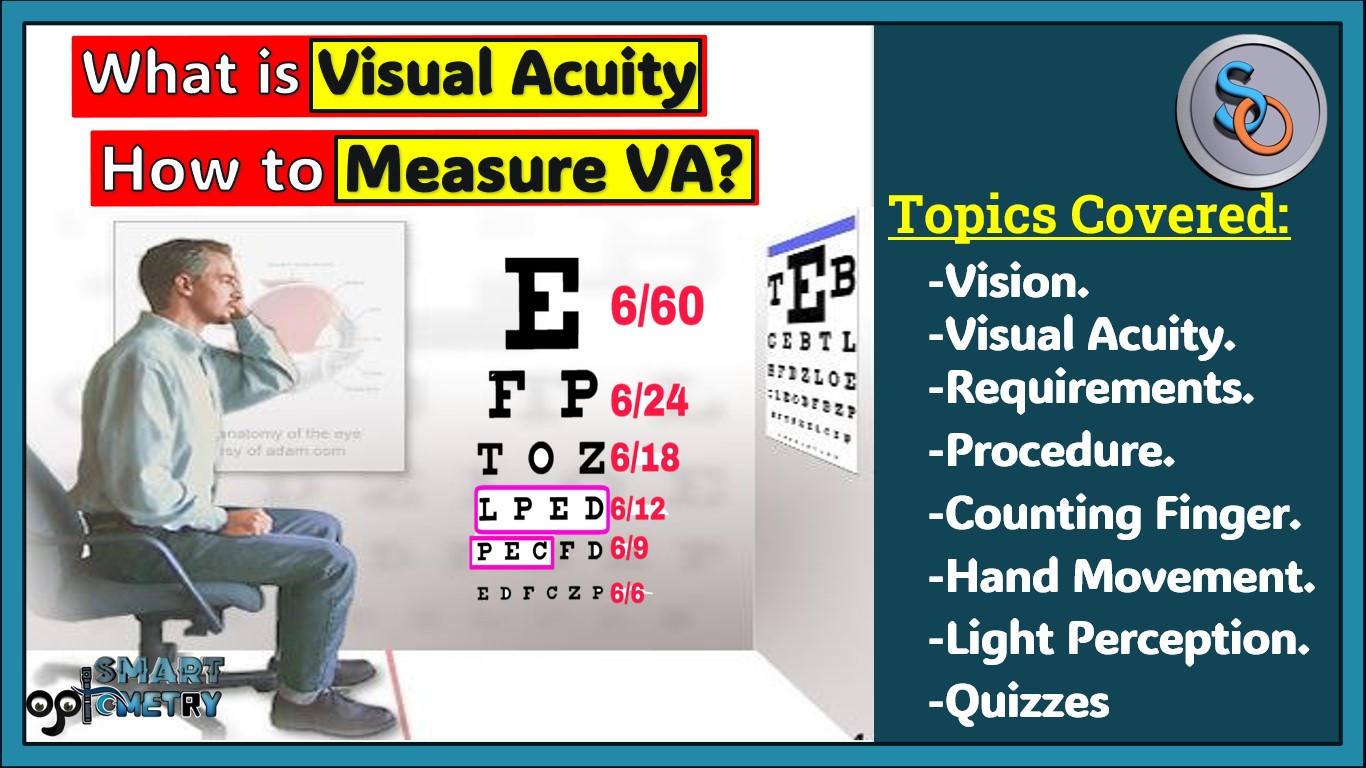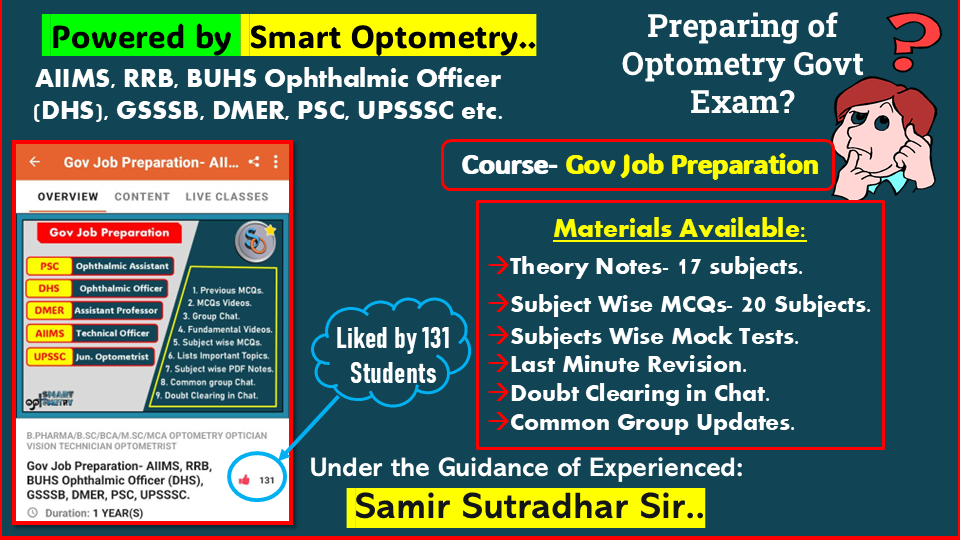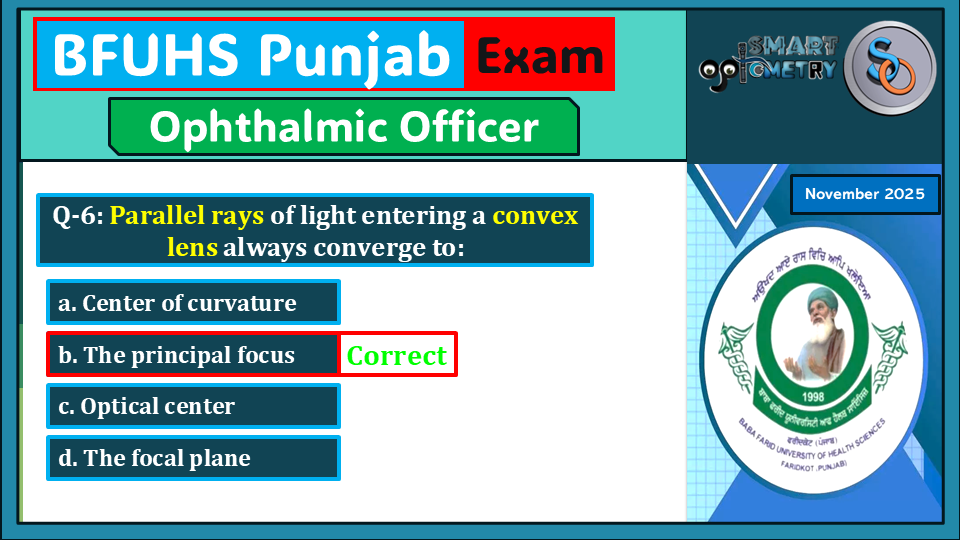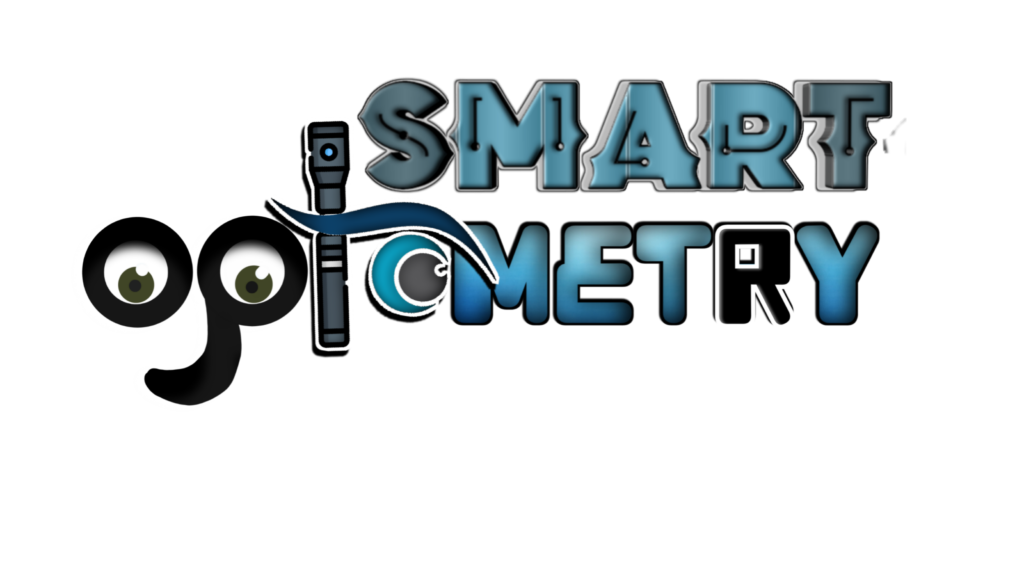What is Visual Acuity?
- To fully grasp the concept of visual acuity, it’s essential to first understand what vision entails.
Vision:
- Vision is the capability of our eyes to perceive objects in terms of their form or shape, color, and contrast.
- Essentially, vision allows us to identify an object’s color, brightness, and shape.
Visual Acuity:
- Visual acuity, on the other hand, specifically refers to the measurement of the form sense of vision.
- This means that when we assess visual acuity, we focus solely on the clarity or sharpness with which we can see the shape or form of an object, disregarding its color and contrast.
- This is why visual acuity charts do not include colorful or varying brightness optotypes; they solely measure the ability to see the shape and form of objects clearly.
How to measure Distance Visual Acuity:
Step-1: Prerequisites of Distance Visual Acuity Measurement:
Room Distance:
- To ensure accurate visual acuity measurements, the room should have a distance of either 6 meters or 3 meters using a mirror setup.
Illumination:
- The room illumination should be no less than 20-foot candles (200 lux).
Accommodation Status:
- There should be no or minimal stimulation of accommodation.
Step-2: Patient Preparation for visual acuity measurement:
Describe the Procedure:
- Begin by explaining the visual acuity test procedure to the patient.
- This helps in reducing any anxiety and ensures the patient knows what to expect during the test.
Request Not to Squeeze Eyes:
- Instruct the patient not to squeeze their eyes during the test.
- Squeezing can alter the shape of the eye; ultimately refractive power of eye that will lead to inaccurate results.
Avoid Pressing Eyes:
- Advise the patient not to press their eyes hard, especially when occluding one eye.
- Pressing the eye can temporarily change its shape and thus affect the accuracy of the test.
Step-3: Measuring Visual Acuity:
Occlude the Non-Testing (left) Eye:
- Ask the patient to cover their left eye using the palm of their left hand or a trial frame with an occluder.
- This ensures that only the right eye is being tested.
Reading the Chart:
- Instruct the patient to read the letters on the chart starting from the top with their right eye.
- The chart typically starts with larger letters at the top, progressing to smaller ones at the bottom.
Recording Visual Acuity:
- If the patient is able to read all the lines and letters correctly, record the visual acuity as 6/6 unaided.
- Unaided means normal vision without the need for corrective lenses.
Now, what if patient is not able to read all the line?
- For each line a specific score is there to score patient visual acuity.
- A general progression Snellen visual chart is as below:
- 1st line 6/60
- 2nd line 6/36
- 3rd line 6/24
- 4th line 6/18
- 5th line 6/12
- 6th line 6/9
- 7th line 6/6
- So, if patient read 3rd line completely his/her visual acuity will be 6/ 24 and so forth.
What if patient is not able to read a complete line?
- If the patient has read 6/12 completely and also 3 more letters from 6/9 line.
- VA for this patient can be written in 3 ways:
- 6/9P (P = Partial),
- 6/12+3
- 6/9-2.
- 6/9-2 is more accurate than other two, because, out of 5 letters patient has read 3 letters which is more than 50% of that line.
What if patient is not able to read any line or letter?
Counting Finger (CF) at Reduced Distance:
- Ideally chart needs to take closer to the patient in 1m steps but in clinical set up it’s not possible to take the chart close to the patient.
- In this case we can show our fingers (almost same width of 6/60 line) First at 5 meters, 4m, 3m, 2m, 1m, CF CF (CF CF = Counting Finger Close to Face).
VA acuity will be recorded as:
- If able to count finger at 5 meters, visual acuity is 5/60.
- If able to count finger at 4 meters, visual acuity is 4/60.
- If able to count finger at 3 meters, visual acuity is 3/60.
- If able to count finger at 2 meters, visual acuity is 3/60.
- If able to count finger at 1 meter, visual acuity is 3/60.
- If able to count finger close to face, visual acuity is CF CF (Counting Finger Close to Face)
What if the Patient is Not Able to Recognize Counting Fingers Close to the Face?
Hand Movement (HM) Test:
- Move your hand right-left & up-down in front of the patient’s eye.
- Ask the patient if they can detect the movement of your hand.
HM Positive (HM+ve):
- If the patient is able to recognize the hand movements, record their visual acuity as HM+ve.
What if patient is not able to recognize Hand Movements?
Perception of Light (PL):
- If not able to recognize Hand Movements, then we will shine a torch light (Room should Dim).
- Now ask the patient whether he/she is able to see the light.
PL +ve:
- If able to recognize the light then VA will be recorded as PL +ve and also need to shine the light from up, down, right and left.
- If patient is able to recognize the light in any direction it is mention as plus+ and if not able to recognize light in any direction then mention as minus (-)
- Suppose, patient is able to recognize light nasally and upward but not able to recognize light in down gaze and temporal gaze, then Visual Acuity will be recorded as:
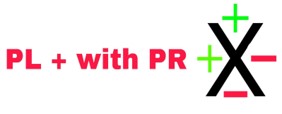
- If patient is not able to recognize the light in any directions, then Visual Acuity will be recorded as:
No Perception of Light (NPL) or PL –ve.
- This is the end of Distance Visual acuity measurement.
Question for You:
1. If A patient has read 6/12 completely and also 2 more letter (out of 5 letters) from 6/9 line then what will be the most accurate visual acuity score?
- A. 6/12p.
- B. 6/9p.
- C. 6/12+2
- D. 6/9-2
Click “Show more” for Answer & Explanation:
Answer: C. 6/12+2
Explanation:
If A patient has read 6/12 completely and also 2 more letter from 6/9 then this can be expressed in 3 ways:
6/9p
6/12+2
6/9-2
But 6/12+2 is more accurate, as patient read 2 letters out of 5 letters from 6/9 line which is less than 50% so we won’t shift to 6/9 line. Thus 6/12+2 will be most accurate visual acuity score.
2. If a patient is not able to read any line and any letters from a chart at 6 meters then what will be the next step?
- A. Hand Movement.
- B. Light Perception.
- C. Reducing Distance.
- D. Patient is Blind.
Click “Show more” for Answer & Explanation:
Answer: C. Reducing Distance.
Explanation:
If patient is not able to read any line or letter, Ideally chart needs to take closer to the patient in 1m steps but in clinical set up it’s not possible to take the chart close to the patient.
In this case we can show our fingers (almost same width of 6/60 line) First at 5 meters, 4m, 3m, 2m, 1m, CF CF (CF CF = Counting Finger Close to Face).
VA acuity will be recorded as:
If able to finger at 5 meters, visual acuity is 5/60.
If able to finger at 4 meters, visual acuity is 4/60.
If able to finger at 3 meters, visual acuity is 3/60.
3. Visual Acuity is measurement of …………… sense of Vision.
- A. Form.
- B. Color.
- C. Contrast.
- D. None.
Click “Show more” for Answer & Explanation:
Ans: A. Form.
Explanation:
Vision is the capability of our eyes to perceive objects in terms of their form or shape, color, and contrast. Visual acuity, on the other hand, specifically refers to the measurement of the form sense of vision.
- Check Our Courses: Ophthalmic Instrumentation, Clinical Refraction, Contact Lens, Binocular Vision, Dispensing Optics, MCQs in Optometry
- Download our App “Optometry Notes & MCQs” from Google Play Store.
